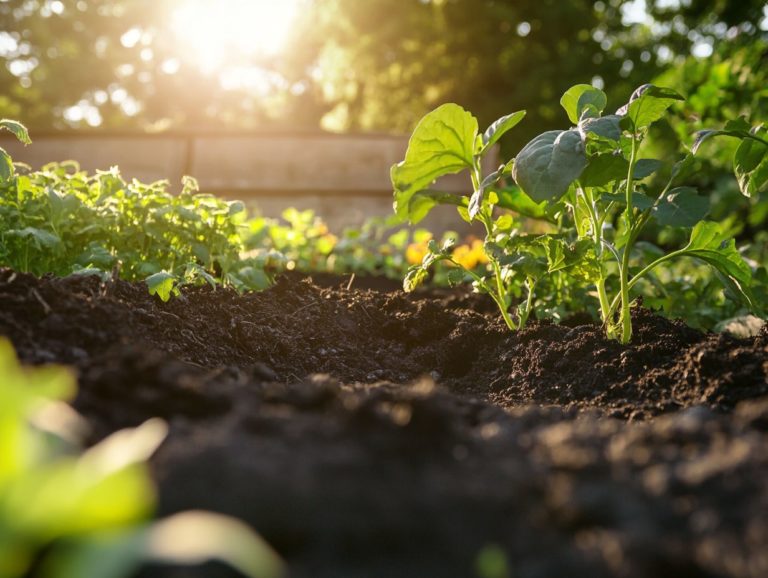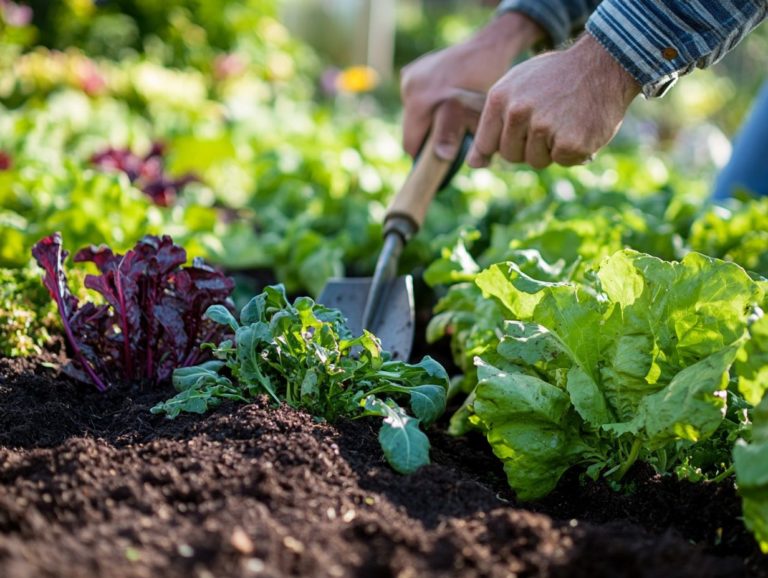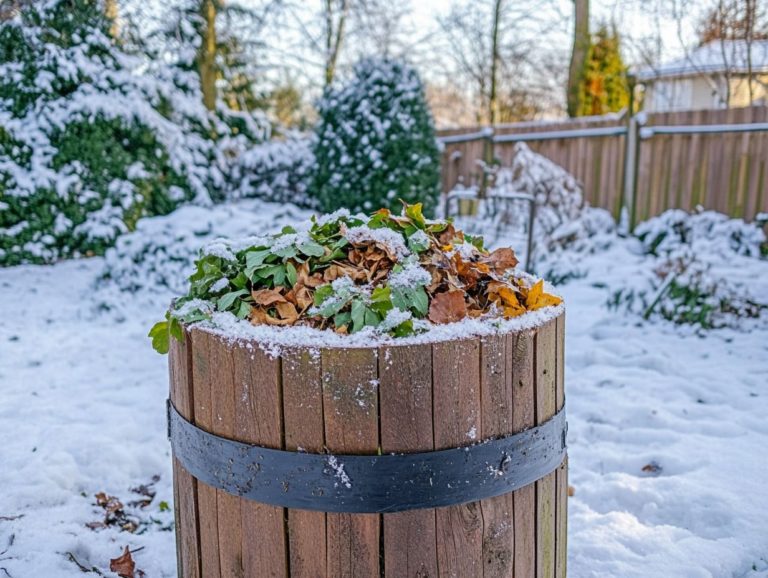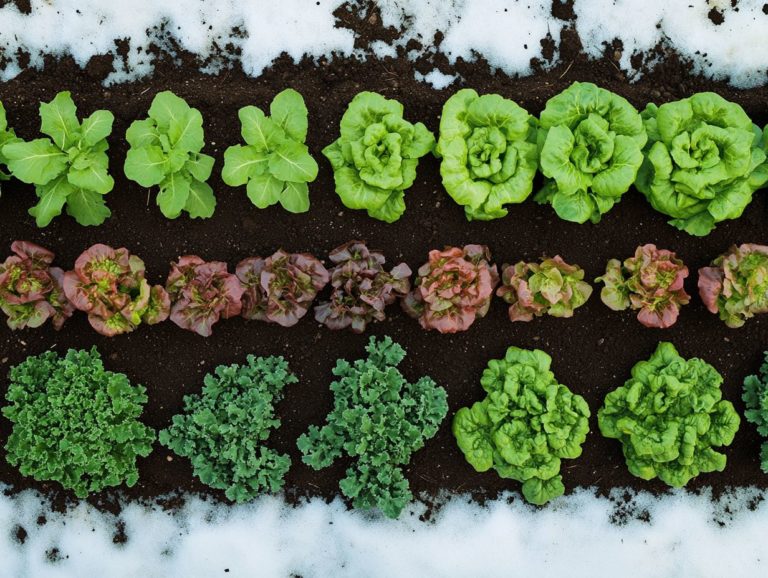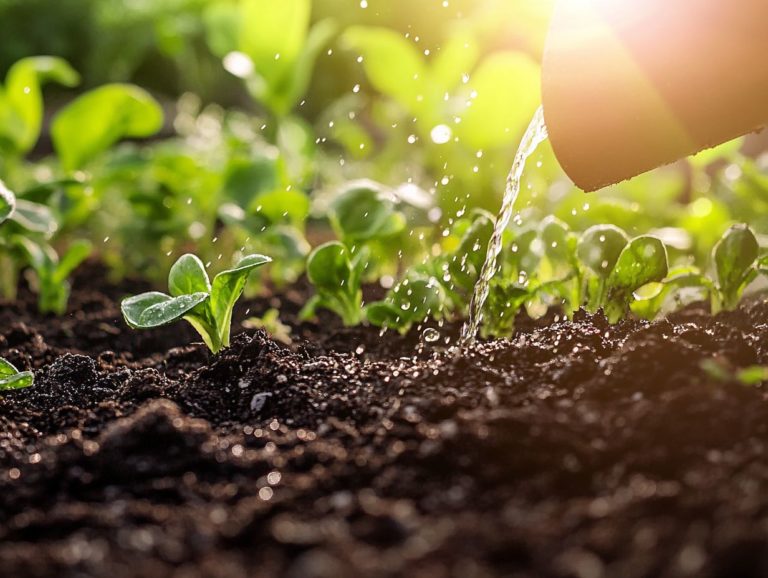The Role of Soil in Plant Health in Cold Climates
Healthy soil serves as the foundation for thriving plants, particularly in cold climates where environmental challenges are prevalent.
By grasping soil composition, nutrient availability, and the various factors influencing soil quality, you can greatly improve your gardening efforts and cultivate a vibrant landscape.
This article delves into essential techniques for adapting soil to cold conditions, pinpointing common plant health issues, and implementing best practices for long-term soil management.
No matter if you re a seasoned gardener or just stepping into the world of horticulture, you ll learn exciting tips to help your plants thrive!
Contents
- Key Takeaways:
- The Importance of Soil for Plant Health
- Soil Composition in Cold Climates
- Adapting Soil for Cold Climate Gardening
- Common Plant Health Issues in Cold Climates
- Best Practices for Maintaining Healthy Soil
- Frequently Asked Questions
- What role does soil play in plant health in cold climates?
- How does soil provide insulation for plants in cold climates?
- What nutrients are important for plant health in cold climates?
- Why is the pH level of soil important for plant health in cold climates?
- How can soil moisture affect plant health in cold climates?
- What are some ways to improve soil health for plants in cold climates?
Key Takeaways:
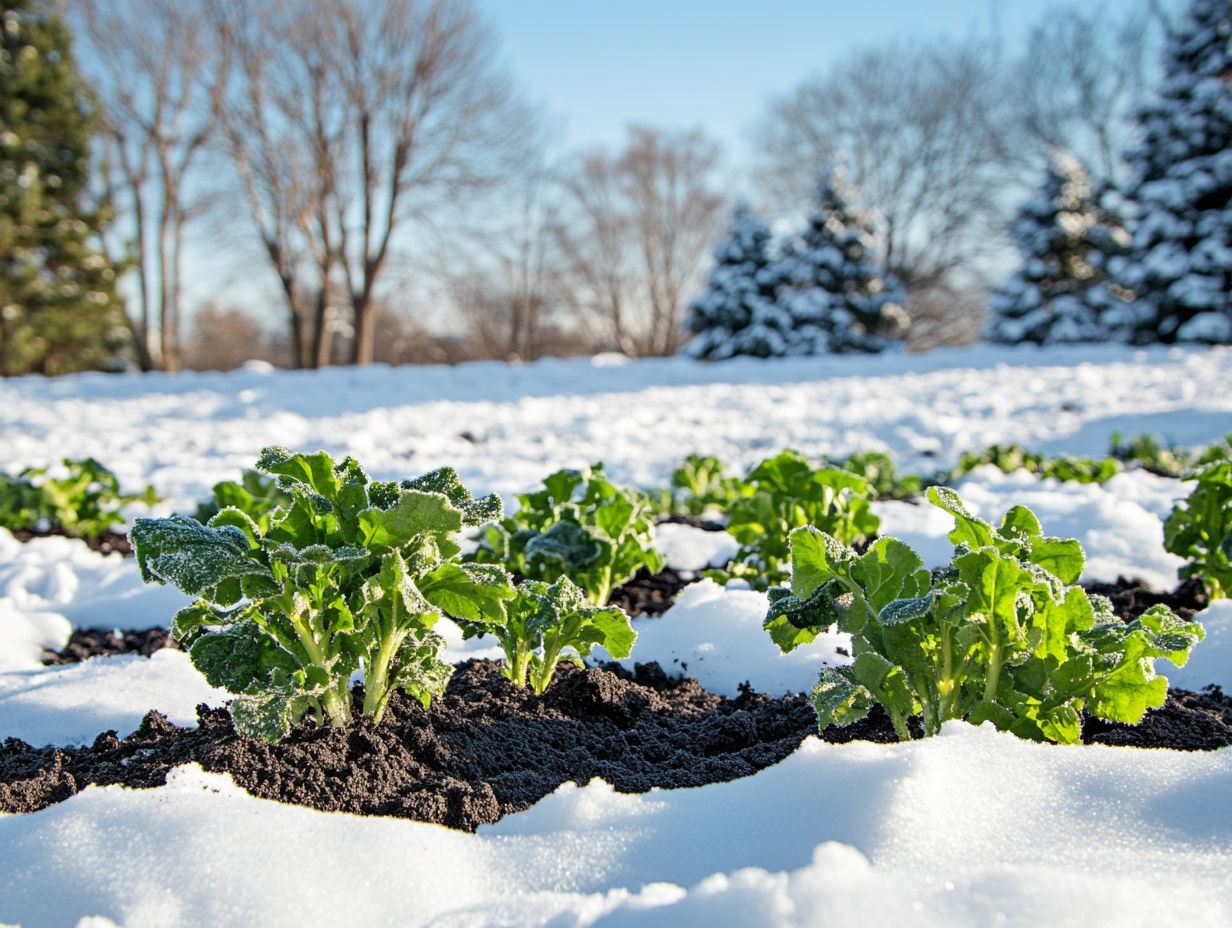
- Soil is crucial for plant health, providing essential nutrients and support for growth.
- Cold climates pose unique challenges for soil health, like low temperatures and snow cover.
- To improve soil quality in cold climates, act now by incorporating practices like mulching, composting, and crop rotation.
The Importance of Soil for Plant Health
Soil is essential for plant health, serving not merely as the foundation for growth but as a vibrant ecosystem teeming with beneficial bacteria, organic amendments, and diverse microbial activity that boosts fertility and nutrient availability. To ensure optimal growth, it’s important to understand what is the best soil for cold-climate gardens.
This interaction shows the importance of effective nitrogen management and sustainable agricultural practices.
For farmers operating in varied climates, like those in Illinois, TIMAC AGRO USA offers invaluable resources to enhance soil health and productivity, ensuring a thriving agricultural environment.
Basic Functions and Nutrient Availability
The fundamental roles of soil are profound: it serves as the bedrock for crops, a reservoir for vital water and nutrients, and a thriving habitat for a diverse community of microbes that significantly enhance nutrient availability.
This microbial community is crucial for converting organic matter into accessible nutrients, especially nitrogen, which is essential for robust plant growth. Managing nitrogen effectively is paramount; insufficient levels can stifle plant development and diminish crop yields.
By adopting practices like composting and integrating organic amendments, you can greatly enhance the nutrient profile of your soil. These approaches not only boost microbial diversity but also cultivate a healthier ecosystem, allowing plants to access the nutrients they require more efficiently.
Ultimately, this leads to increased productivity and sustainability in agricultural practices, setting the stage for a flourishing future.
Soil Composition in Cold Climates
Understanding soil composition in cold climates is crucial for optimizing plant growth. Resources like understanding soil needs for cold-climate plants highlight factors such as soil moisture content, temperature influences, and microbial activity, which can significantly impact soil health and nutrient availability during the winter months.
By grasping these elements, you set the stage for thriving plants even in the harshest conditions.
Factors Affecting Soil Quality
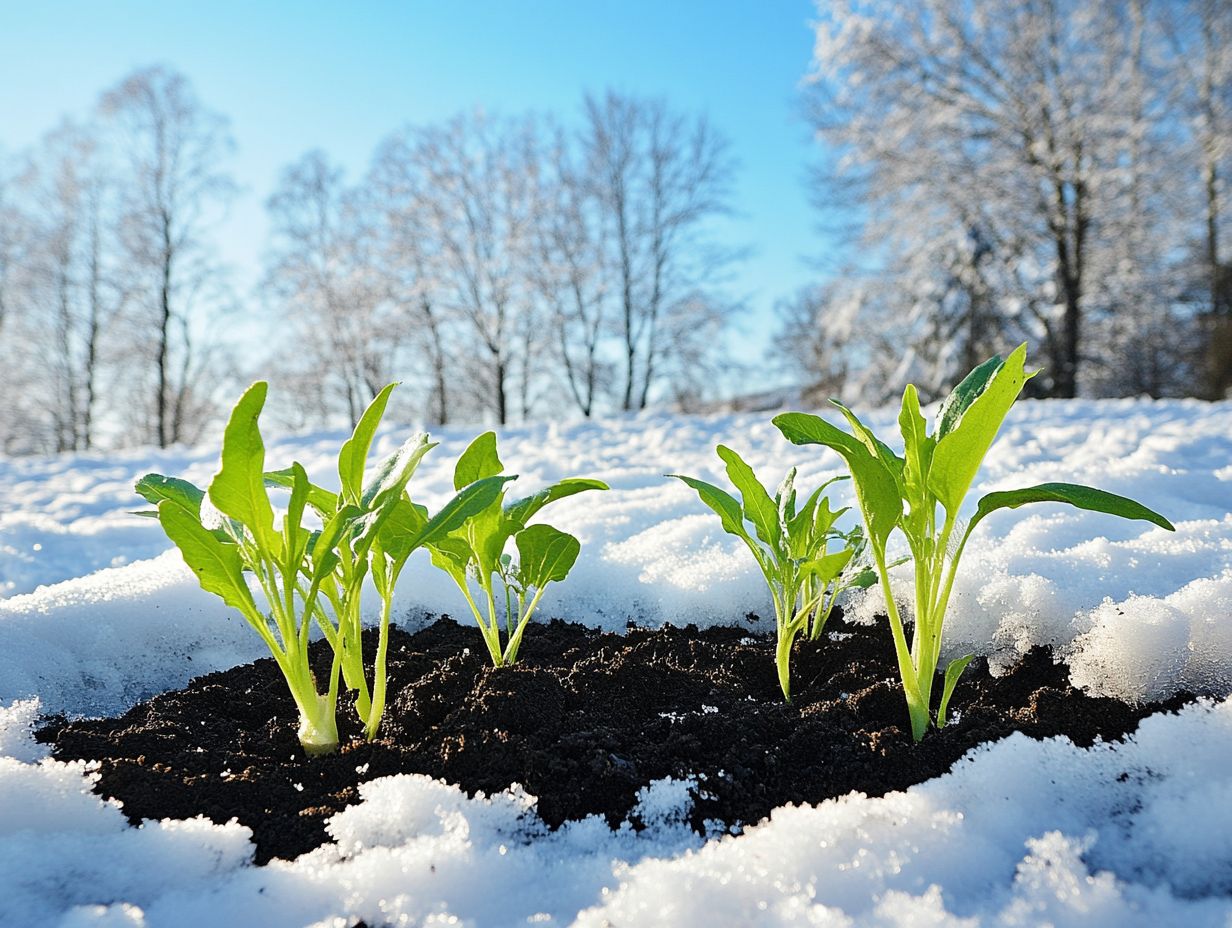
Several factors influence soil quality, including moisture levels, the diversity of microbial activity, and overall fertility all of which are shaped by seasonal variations, especially during winter.
During the colder months, these aspects become even more critical. Low temperatures can lead to reduced microbial activity and altered moisture dynamics, which can result in diminished nutrient availability for plants. Understanding soil drainage needs in cold climates can help address these challenges to their growth and health.
It s essential for you to grasp how these seasonal changes impact the biological and chemical processes within the soil.
To address these concerns, act now by incorporating organic matter, mulching to retain moisture, and rotating crops. These strategies can significantly enhance soil health and biological diversity, paving the way for a flourishing ecosystem as temperatures begin to rise.
Adapting Soil for Cold Climate Gardening
Adapting soil for cold climate gardening requires a thoughtful approach, incorporating practices like cover cropping and composting. For more insights, understanding soil fertility levels in cold climates is crucial. These methods enrich the soil’s fertility and cultivate beneficial bacteria that bolster plant growth, even in the harshest winters.
Implementing these strategies ensures a thriving garden despite the chill.
Techniques for Improving Soil Quality
Enhancing soil quality involves cover cropping, utilizing organic amendments, and managing nitrogen each plays a pivotal role in sustainable agriculture while boosting microbial activity.
Integrating these methods significantly increases nutrient availability and promotes the healthy growth of essential soil microorganisms. For example, cover cropping reduces erosion and improves soil structure, making it resilient during heavy rainfall or drought conditions.
Organic amendments, such as compost, enrich your soil with vital nutrients, ensuring essential minerals are readily available for your crops.
Managing nitrogen helps minimize leaching and loss of this critical nutrient, consistently supporting plant growth. In the long run, these practices lead to robust crop yields and a sustainable farming ecosystem that thrives for generations.
Common Plant Health Issues in Cold Climates
Common plant health issues in cold climates often arise from soil-related challenges. You may encounter problems like insufficient moisture retention, reduced microbial activity, and nutrient deficiencies. To address these, understanding soil microorganisms in cold climates is crucial, as each of these factors can significantly impact your agricultural practices and the environment.
Identifying and Addressing Soil-Related Problems
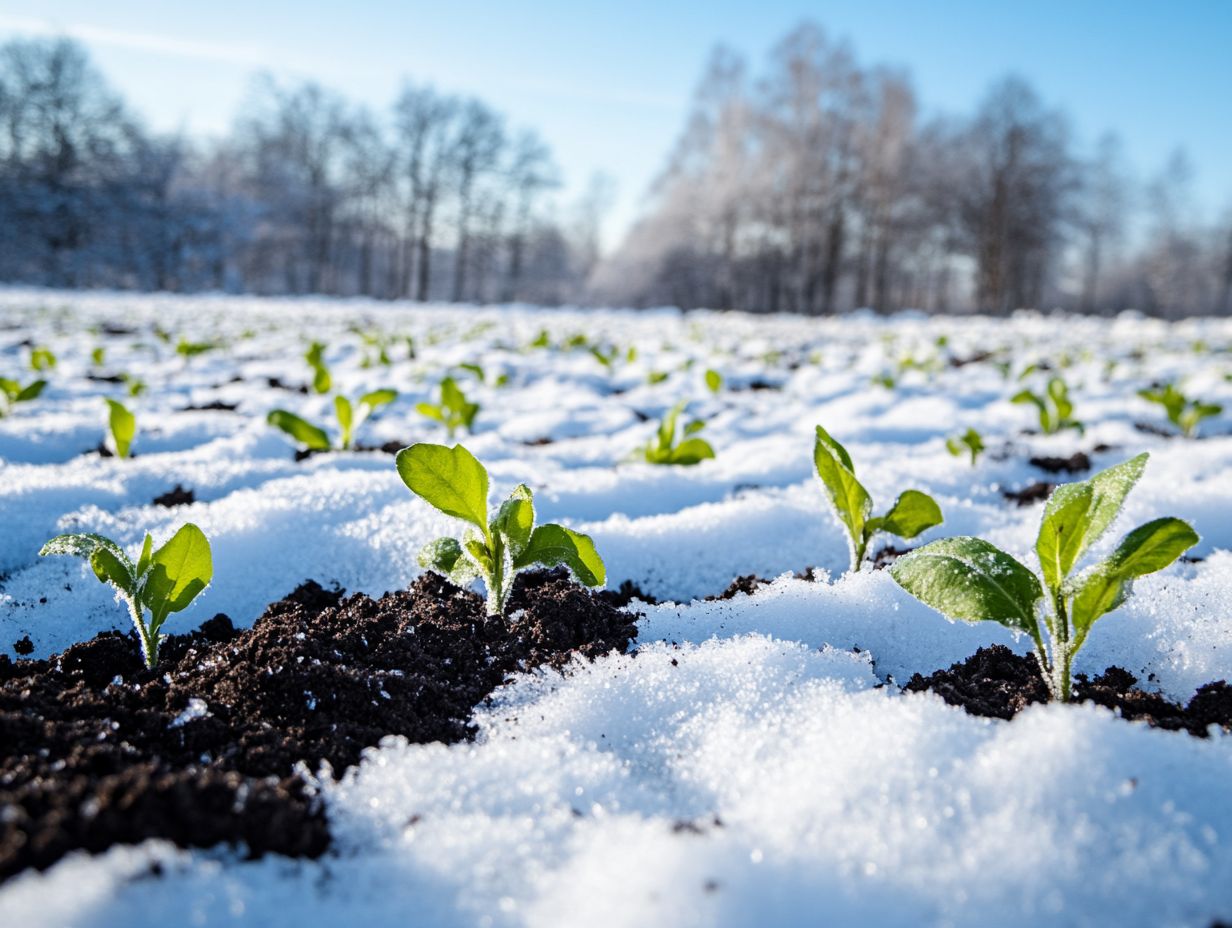
Identifying and addressing soil-related problems is essential for maintaining plant health. Issues like poor drainage and low nutrient levels can significantly impact your crops and overall soil vitality.
Watch for signs such as stunted growth, yellowing leaves, or reduced flowering; these may indicate underlying soil issues that hinder yield and lead to long-term declines in fertility.
Regularly testing your soil’s pH levels and nutrient content empowers you to make informed choices about necessary amendments.
Consider implementing cover crops to enhance soil structure and prevent erosion. Integrating organic materials like compost or green manure replenishes essential nutrients. Adopting crop rotation practices can break pest cycles and improve soil resilience, fostering a sustainable agricultural ecosystem.
Best Practices for Maintaining Healthy Soil
Healthy soil is the heart of thriving agriculture let’s keep it vibrant! To achieve this, embrace best practices such as:
- Conducting regular soil testing
- Implementing effective crop rotation strategies
- Utilizing crop insurance
- Applying organic amendments
These steps enhance soil fertility and help mitigate environmental impacts, ensuring the longevity and productivity of your agricultural endeavors.
Tips for Long-Term Soil Management
Long-term soil management invites you to embrace sustainable agriculture practices that enhance microbial activity through organic amendments and effective nitrogen management strategies.
These approaches improve soil structure and encourage biodiversity the variety of different species in an ecosystem. By incorporating organic materials like compost or cover crops, you cultivate a thriving microbial community, essential for nutrient cycling and soil aeration.
Careful monitoring and adjustment of nitrogen levels help prevent leaching and promote plant health, ultimately leading to more robust yields.
Over time, these practices will reduce your dependency on chemical fertilizers, decrease erosion, and contribute to a healthier environment, ensuring that the land remains productive for generations to come.
Frequently Asked Questions
What role does soil play in plant health in cold climates?
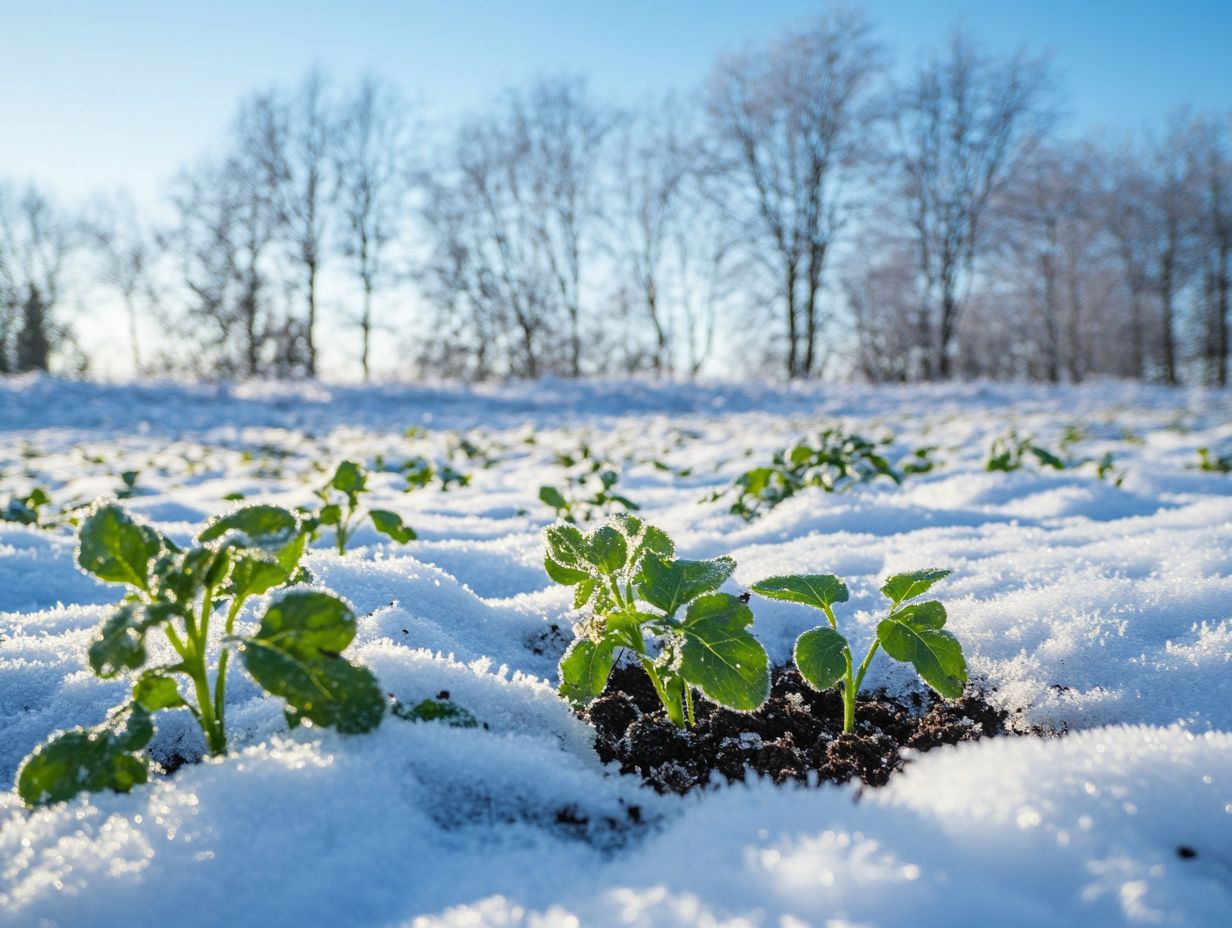
Soil is essential for plant growth in any climate. It is especially important in cold climates.
How does soil provide insulation for plants in cold climates?
The layers of soil act as a natural insulator. They trap pockets of air and prevent extreme temperature fluctuations, protecting sensitive roots.
What nutrients are important for plant health in cold climates?
In addition to basic nutrients like nitrogen, phosphorus, and potassium, plants in cold climates need higher levels of certain micronutrients (small amounts of nutrients that are vital for plant health), such as calcium and magnesium. For a deeper insight into how these factors interact, consider exploring understanding soil pH in cold climates, as this can strengthen cell walls and make plants more resilient to cold weather.
Why is the pH level of soil important for plant health in cold climates?
The pH level of soil greatly impacts plant health. Soil that is too acidic or alkaline prevents plants from absorbing essential nutrients, leading to stunted growth and poor health. Testing and adjusting soil pH levels is important for optimal growth.
How can soil moisture affect plant health in cold climates?
Soil moisture is crucial for plant health. Inadequate watering can lead to drought stress, while overwatering can cause root rot. Monitoring soil moisture levels is essential for healthy plant growth, especially for sensitive crops.
What are some ways to improve soil health for plants in cold climates?
Want to boost soil health in cold climates? Try adding organic matter like compost and mulch to retain moisture and provide nutrients. Adjust pH levels as needed and rotate crops to prevent nutrient depletion. For a deeper understanding, explore understanding the soil food web in cold climates. Incorporating beneficial bacteria and organic amendments can also enhance soil quality. Regular soil testing helps identify necessary amendments for optimal growth and ensures effective nitrogen management through cover cropping and composting.

